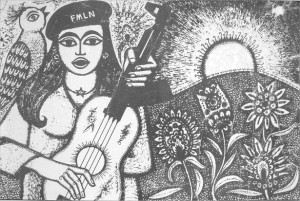 Paige, Jeffery M. 1997. Coffee and Power: Revolution and the Rise of Democracy in Central America. Cambridge: Harvard University Press.
Paige, Jeffery M. 1997. Coffee and Power: Revolution and the Rise of Democracy in Central America. Cambridge: Harvard University Press.
Jeffrey Paige’s book Coffee and Power is an exemplary piece of comparative research. In addressing three Central American countries tortured path toward democratization, he could not have picked more distinct cases: social-democratic Costa Rica, the Sandinista’s revolutionary Nicaragua, and the Orwellian El Salvador of the death squads. However, despite the zenith of these dramatic differences in the 1980s, all three countries ended up embracing neoliberal reforms and relatively free multi-party elections a decade later. In explaining this complex trajectory, Paige goes back to the critical years after the Great Depression—with Costa Rica (in its fullest blossom) slightly later—in which all three countries experienced popular insurgencies. He ties both revolutionary moments (1930s and 1980s) to the world-economic crisis immediately preceding each period. In any case, the struggles of the past were hugely consequential for the subsequent socialist revolutions from below that ultimately unraveled into the neoliberal so-called “end of history.” Throughout, Paige explains all this as, fundamentally, a story of shifting class relations.
Paige’s main conclusion?
Just as Barrington Moore had argued, breaking the power of the lords of the land was necessary for the triumph of democracy. Contrary to Moore, however, the agro-industrial bourgeoisie could not carry out this task itself. They and the landlords were two fractions of the same elite. The actions of the armed left were necessary to fracture the alliance and break the power of the landlords…. Although the socialist revolutionaries destroyed the old order and opened the way for democracy, the ironic outcome of their efforts was the triumph of the agro-industrial bourgeoisie and neo-liberalism. (359)
There you have the common denominator across all three cases, explaining their “transitions to [neoliberal] democracy.” Paige makes a keen distinction that helps him build this argument: the Central American rural elite is composed of two groups. One is the “agro-industrial elite,” who are those involved in buying, processing, and commercializing agricultural commodities. The other is what he calls simply “agrarian elites,” who are actually landowners and producers. He also integrates the ideologies produced by and accompanying these processes, showing how they form an integral part of the historical developments.
Here’s how Paige says this all shakes out: In Costa Rica, for instance, coffee production was based on relatively “egalitarian” landholdings so agrarian elites were particularly weak, creating conditions for a kind of “coffee compact” between small-medium landowners and agro-industrial elites. The structural conditions of class relations as well as anti-communist and non-confrontational ideologies created an accommodating environment between classes that resulted in a social-democratic political system. Ideologically, Paige shows the importance of the “White Legend” of Costa Rica in which the country is presented in near-utopian terms of egalitarianism and social harmony, the “Switzerland of Latin America.”
In Nicaragua, a strong agro-industrial elite never developed due to U.S. occupation in the 1930s, which nipped the trend in the bud, and the relative strength of agrarian elites personified by the Somoza dynasty. It took the Sandinista’s socialist revolution, which received critical support from non-coffee, agro-industrial sectors to break the agrarian elite stranglehold.
Finally, in El Salvador, both fractions of agrarian elites heavily relied on Central America’s most proletarianized peasant class, creating a highly polarized political environment from the start (a polarization that perhaps at least partly helps explain the relatively lengthier, and more violent war in this country). Salvadoran rebels did not achieve their revolutionary goals, but through a military stalemate they did manage to break apart the alliance between elite fractions. Agro-industrial elites began to see the war as unwinnable and an impediment to accumulation.
The irony, as Paige points out, is that all three countries ended up with neoliberal democracies (though the similarities between this superficial fact is perhaps overdrawn; the countries are still quite different). Nonetheless, he claims the “socialist revolution from below” is a unique path toward democratic transition.
The ideological determinants that Paige identifies in each case have strong roots in colonial histories and the importance of liberal thought in Latin America, particularly the logical positivist tradition among many elite 19th Century intellectuals. Paige identifies a single word from this liberal tradition that each national elite used to hinge much of their ideological arguments despite obvious contradictions with their actions in practice: for Salvadoran elites it was “progress,” for Costa Ricans it was “democracy,” while elites in Nicaragua emphasized “liberty” (both political and economic).
The 1930s struggles in El Salvador and Nicaragua proved particularly important. Not only in terms of providing later rebels with a national-popular lore, figures, and political identity, but also in terms of how elites remained haunted by the events of the 1930s. This is particularly palpable in El Salvador where tens of thousands were slaughtered in la matanza in its first “red scare.” The paranoia again hit genocidal proportions in the 1980s against the FMLN.
